Coway AirMega Review
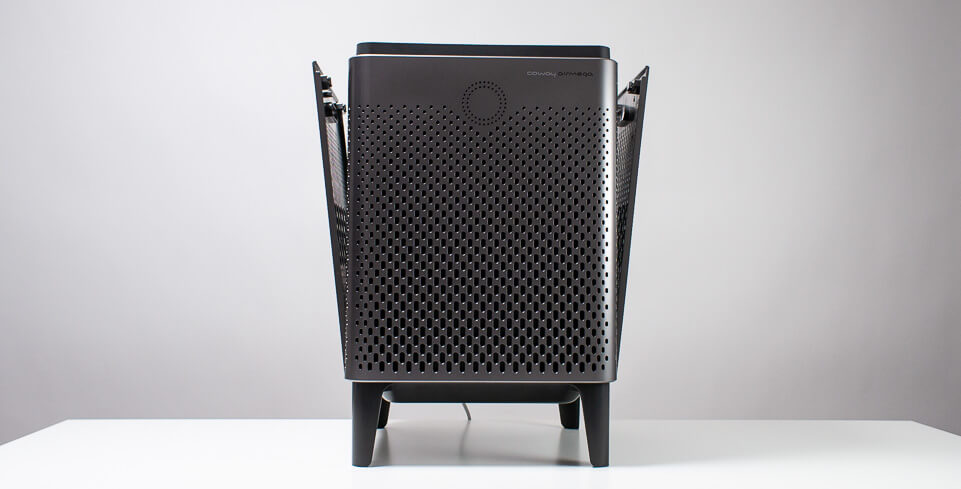
Feature Scores
Pros
- High output – approx. 430 CFM for the AirMega 400 and 400s and approx. 360 CFM for the AirMega 300 and 300s. This high output means that the unit is going to be able to process a lot of air over and over again very quickly in smaller rooms, and also be able to properly service larger rooms.
- High quality filters – washable pre-filter (you don’t need to replace it – you can just clean it), true HEPA filter for particle filtration, pellet-based carbon filter – for greater surface area for unwanted gas (VOC, odor) adsorption.
- Terrific well above average energy efficiency (CFM/watt ratio) on all 3 fan speeds and low maximum wattage for 430 CFM ( only about 60 watts of power draw on high fan speed). For comparison, the Coway Mighty (a top rated air purifier) outputs at about 250 CFM with just over 70 watts of power draw so for this unit to output at over 400 CFM with only 60 watts of power draw is quite the accomplishment.
- Very low noise output, especially considering its high CFM. Again, we compare it to the Coway Mighty: the AirMega and the Mighty have about the same noise output on max. fan speed
- but the AirMega has almost double the output (CFM) at that same noise output.
Cons
- There’s really only one thing we don’t like about this unit: it just isn’t a good value. We’ll cover this shortcoming in-depth at the end of this review
Editor's Score
Quick Facts
This is a review for the Coway AirMega series of air purifiers. We specifically tested the 400s but much of our review also applies to the 400 the 300 and the 300s as these units are all very similar.
The 400 models are slightly larger and heavier with about 60 to 80 more CFM of output. The S models can be controlled using an app – otherwise they’re nearly identical to their non-s counterparts.
300 vs 400 Models
300 |
400 |
|---|---|
Approx. 360 CFM (340 pollen CADR) |
Approx. 430 CFM (400 pollen CADR) – approx. 60 to 80 more CFM |
1256 claimed sq. ft. |
1560 claimed sq. ft. |
Only available in white |
Available in either graphite (black) or white |
No light sensor |
Light sensor on left side of control panel – if set to auto (smart) mode, unit will automatically be set to sleep mode if light sensor senses only darkness for 3 minutes |
Single button that is pressed to cycle through modes and fan speeds |
“Buttons” next to each mode/fan speed so you can directly select mode/fan speed |
21.4 lb. (spec.) – slightly lighter |
24.7 lb. (spec.) |
20.1x13.6x13.6 (spec.) |
22.8x14.8x14.8 (spec.) |
Different size filters – about $80 for set |
Different size filters – about $120 to $130 for set |
Approx. $380 to $450 (high of approx. $650 and low of approx. $320 over last few years) |
Approx. $450 to $650 (high of approx. $750 and low of approx. $360 over last few years) |
Regular vs S models
Non S |
S |
|---|---|
Cannot be controlled via app |
Can be controlled via app |
Timer button and indicator light on left side of cpanel in same location as wifi would be |
Wifi button and indicator light on left side of control panel |
Simple air quality indicator – single color displays for different air quality – red, pink, purple, blue |
More complex air quality indicator – multiple colors display – pink and red, yellow and pink, green and yellow, blue and green |
About $100 cheaper |
About $100 more expensive |
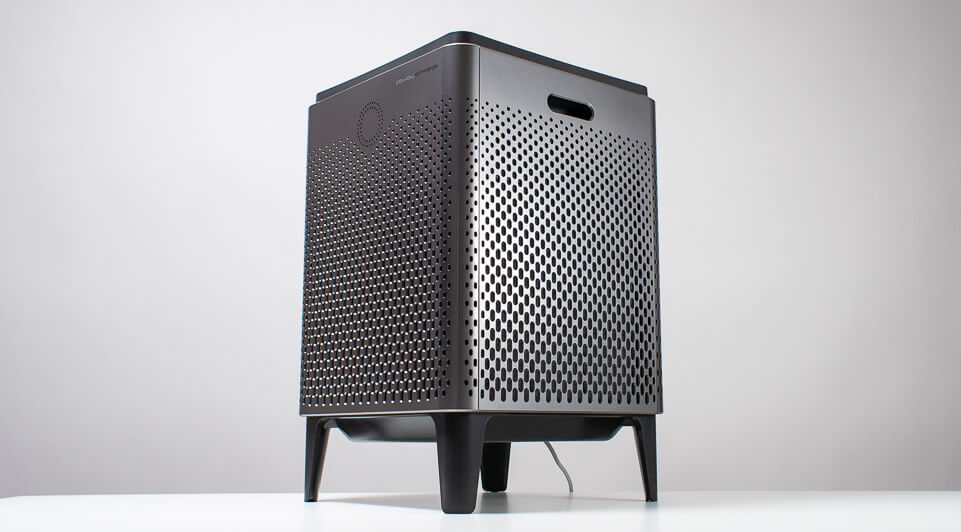
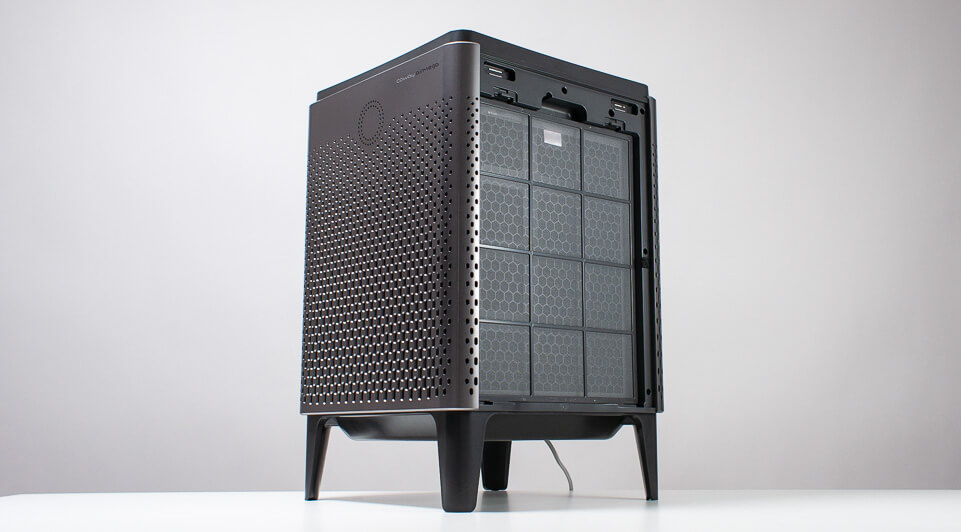
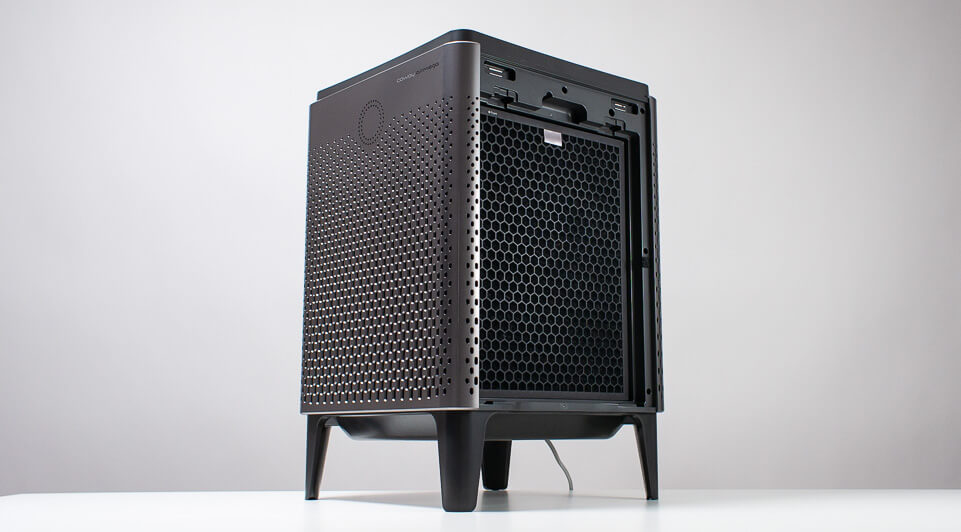
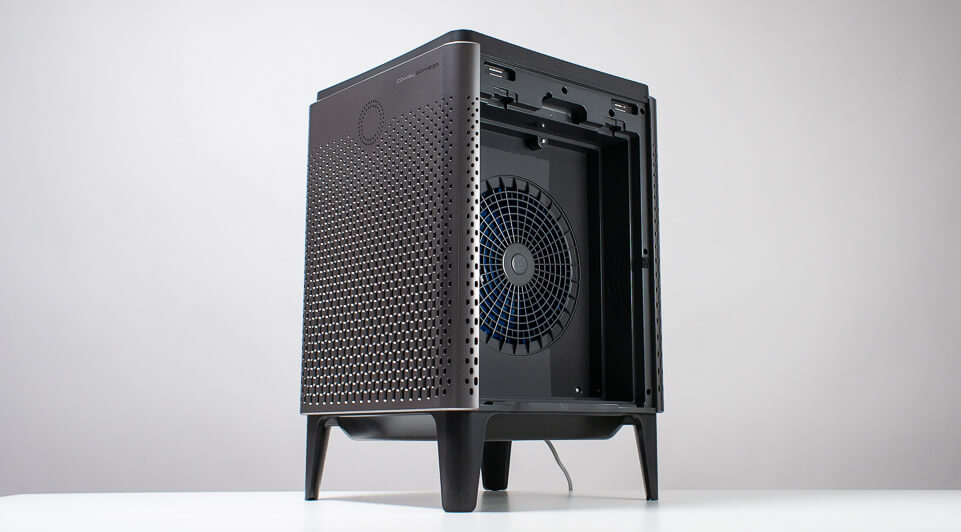
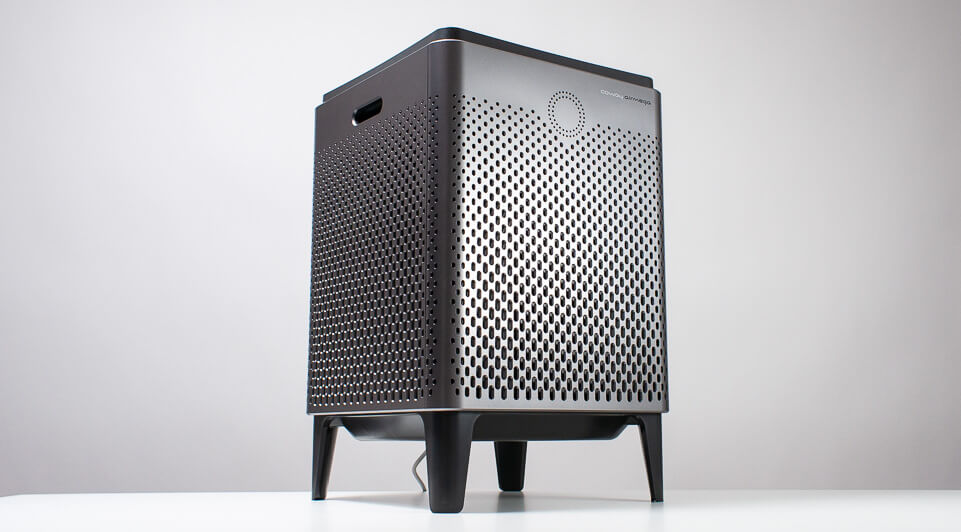
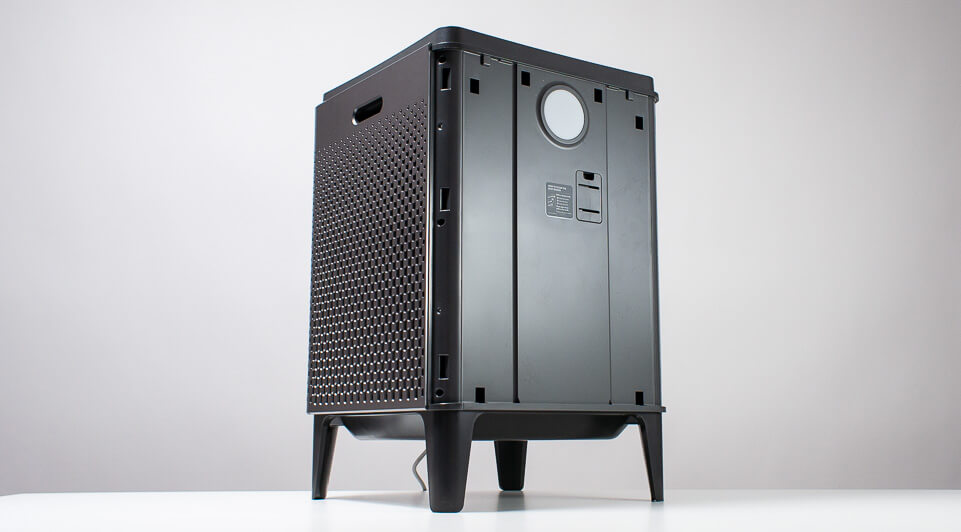
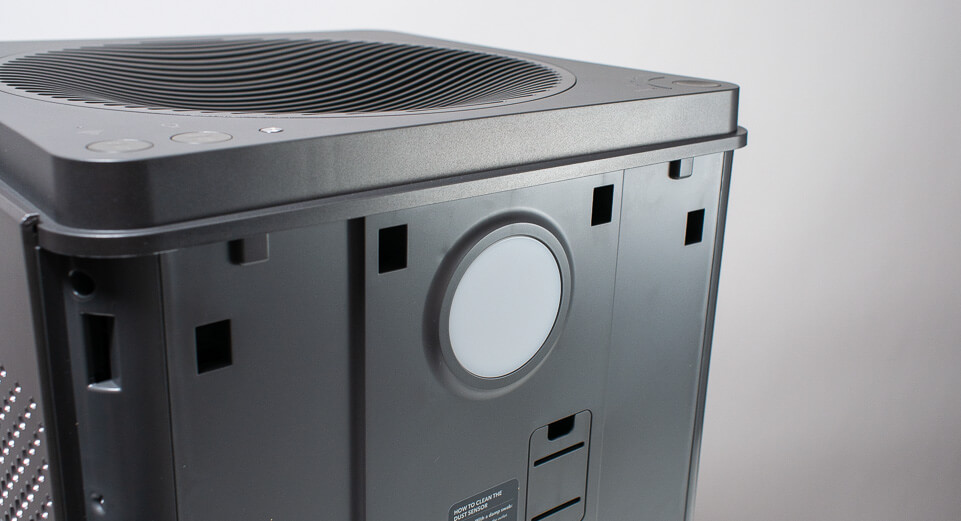
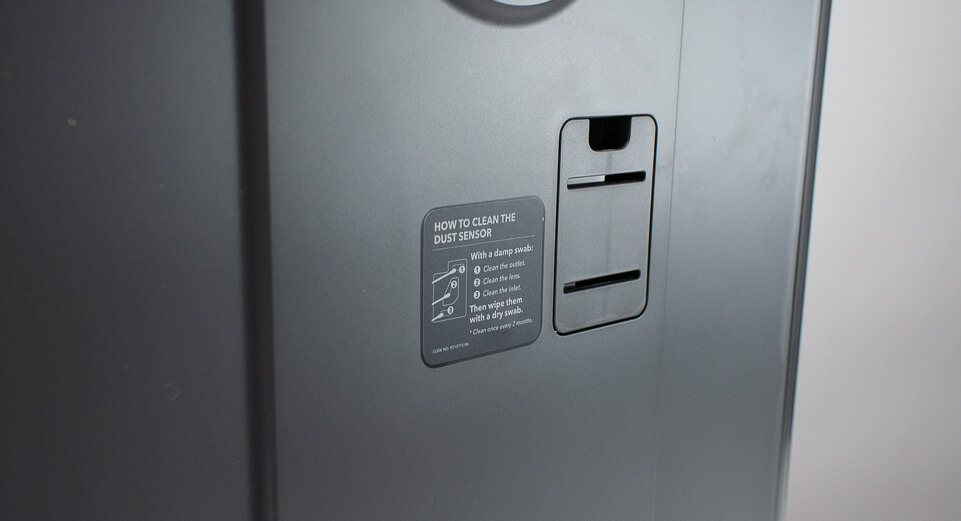
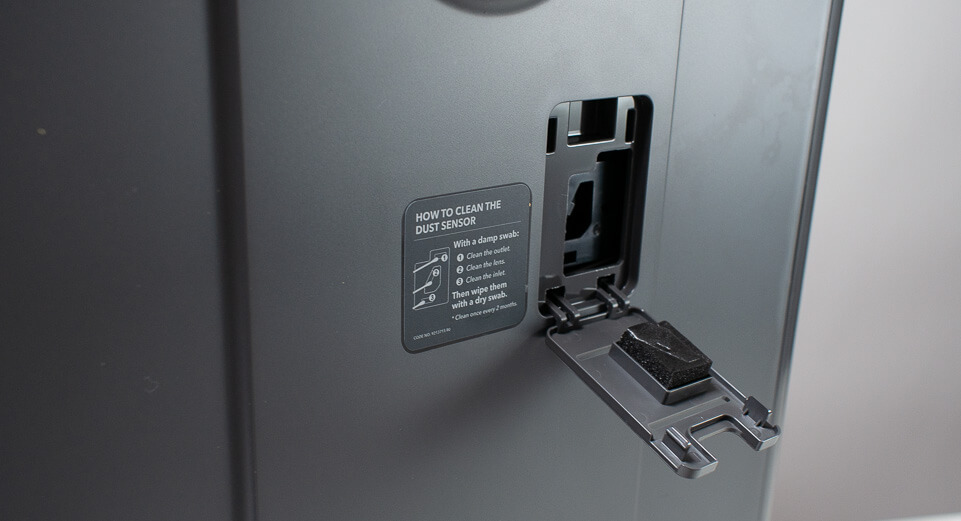
Analysis
A step by step breakdown of the AirMega's performance.
Air Processing Performance
Test Results
In a 150 sq. ft. test environment, the Coway AirMega lowered room particle concentration from 10,000 particles per cubic ft. down to 1,000 particles per cubic ft. in 4 minutes. The former concentration (10,000 particles per cubic ft.) is relatively dirty air while the latter concentration (1,000 particles per cubic ft.) is relatively clean air.
The AirMega outputs at a whopping 430 CFM (approx.). This means that it can process up to 430 cubic ft. of air per minute. Units with lower output (less CFM) took longer to clean the test environment given the same starting and ending conditions. For example, the approx. 250 CFM Coway Mighty and Winix 5500-2 took 9 and 10 minutes, respectively – slightly more than double the 4 minutes of the AirMega. The approx. 140 CFM very popular GermGuardian AC4825 took 23 minutes to clean the air in the room from a starting point of 10,000 particles per cubic ft. to and end point of 1,000 particles per cubic ft.
As a continuation of this initial test (taking room air from 10,000 particles per cubic ft. down to 1,000 particles per cubic ft.) we allowed each air purifier to continue to run to see just how low of a particle concentration it could achieve given an indefinite run time. 1,000 particles per cubic ft. is a low concentration but many air purifiers were able to get the concentration even lower given additional run time. In fact, many got it down to as low of a concentration as we were able to measure - 100 particles per cubic ft.
The AirMega, Mighty, and Winix 5500-2 are some examples of units that were able to achieve this ultra-low room particle concentration of 100 particles per cubic ft. given additional run time. The GermGuardian AC4825 is an example of lower output units that were only able to achieve a room particle concentration in the 500 to 900 particles per cubic ft. range. The AC4825 got the room air down to 500 particles per cubic ft. The approx. 110 CFM Honeywell HPA100 got it down to 900 particles per cubic ft.
So, in summary, the AirMega, with its extremely high output of approx. 430 CFM was able to clean the air in a relatively small room (150 sq. ft.) about twice as fast as units in the 250 CFM range and more than five times as fast as units in the 100 to 150 CFM range. In addition, the AirMega and top rated 250 CFM units like the Coway Mighty and Winix 5500-2 were able to get room air down to an ultra-low concentration of only 100 particles per cubic ft. Most units with less than 250 CFM of output, including the GermGuardian AC4825, were not able to get the room air any lower than a concentration of about 500 particles per cubic ft.
Filter Analysis
Special note: the AirMega comes equipped with two identical sets of filters. One set fits into the left side of the air purifier while the other side fits into the right side of the air purifier. So, when we talk about its pre-filter, HEPA filter, and carbon filter below, understand that we’re talking about one set of filters. The unit actually has two pre-filters and two HEPA filters and two carbon filters. Furthermore, its HEPA and carbon filter are combined into one combination filter. So, while it has two sets of filters consisting of three different filter types each (pre, HEPA, carbon), there’s only two filters (pre and combination HEPA and carbon) in each filter set.
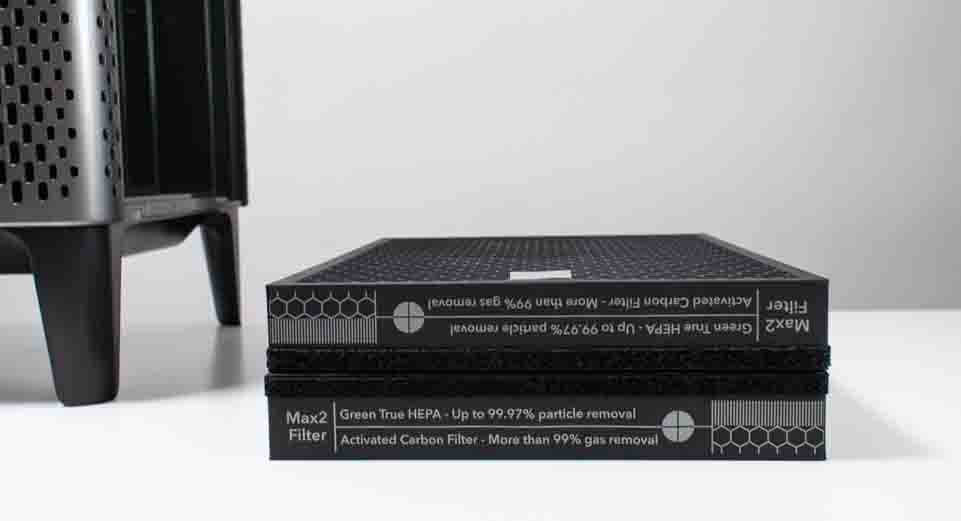
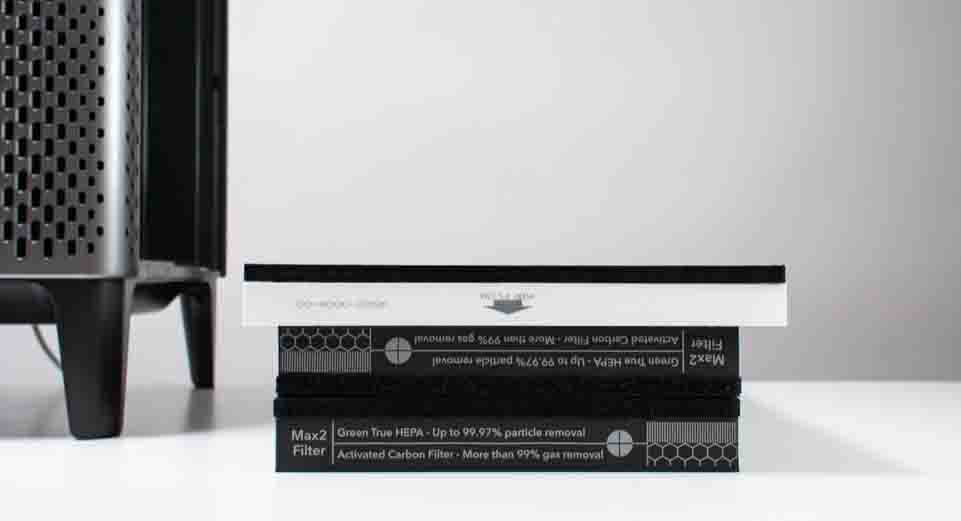
Particle Filter
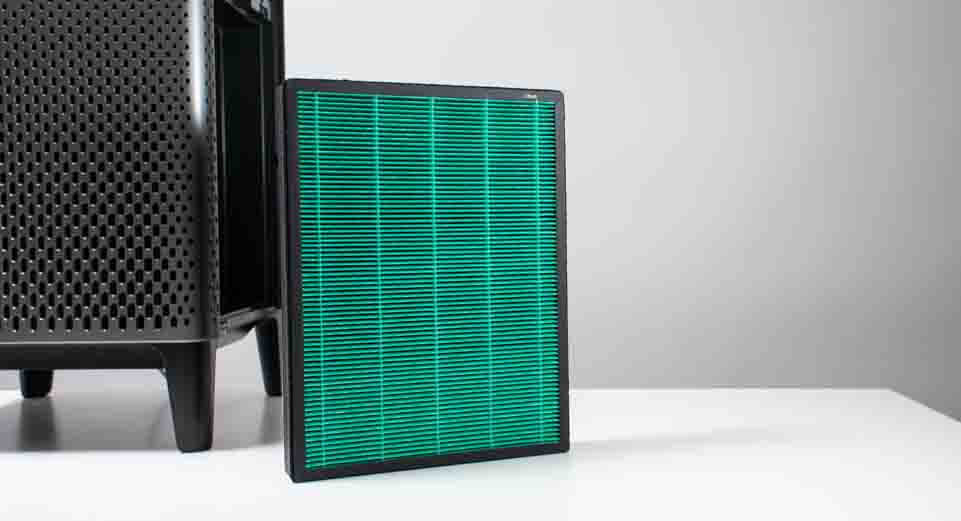
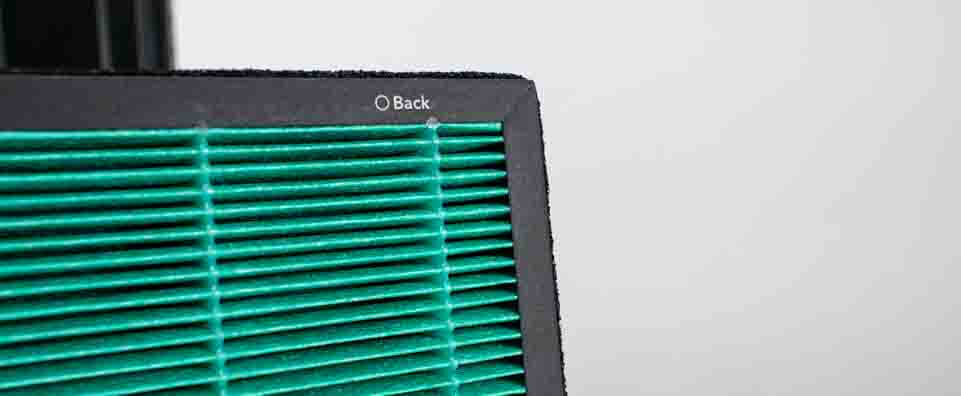
The AirMega is equipped with a HEPA filter to filter out particles like dust, pollen, and mold spores. HEPA filtration is ubiquitous in the air purifier industry. The Coway Mighty has the exact same type of particle filter – a HEPA filter. So does the Winix 5500-2 and even the budget priced GermGuardian AC4825.
The HEPA filter in each of these units works exactly the same and is equally efficient. For a filter to even be called a true HEPA filter in the first place, it has to have an efficiency of 99.97%. This means that it can filter 99.97% of particles that travel through it. The HEPA filter in the AirMega, Mighty, 5500-2, AC4825, and in all other air purifiers that come equipped with a HEPA filter has this exact same efficiency of 99.97%.
The bottom line: because they all have the same type of particle filter, all of the air purifiers mentioned above filter out particles equally well with equal efficiency. The difference between them lies in the total output (CFM), feature set (timers, auto modes, etc.), and gas filtration and pre-filtration which we talk about next.
Gas Filter
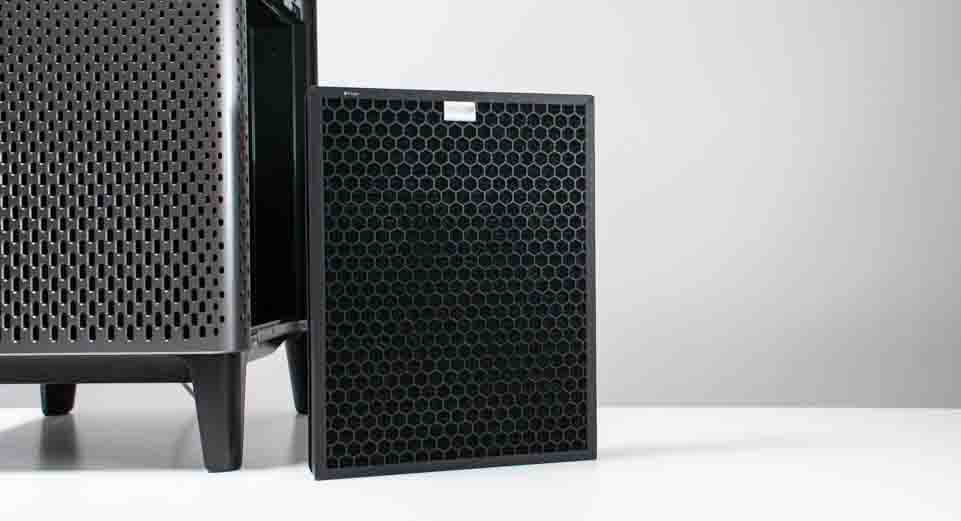
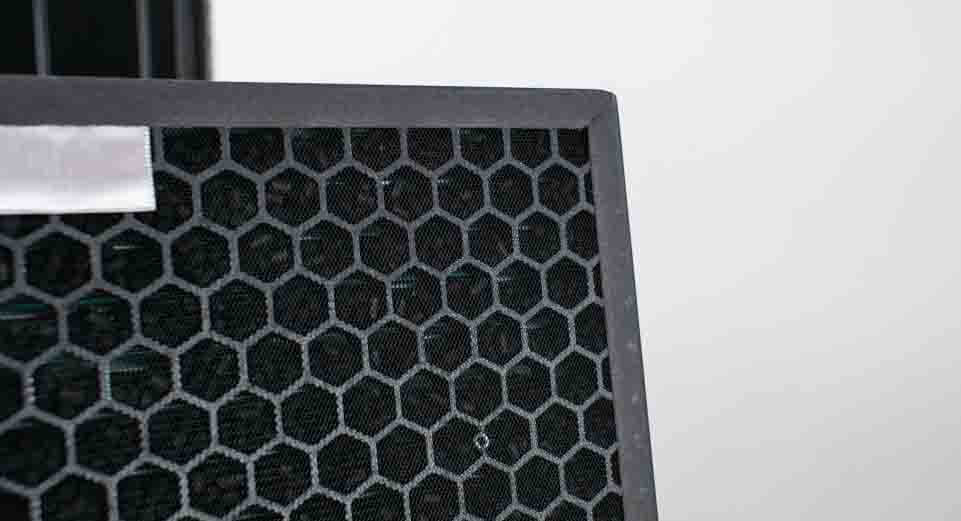
The AirMega is equipped with a pellet-based carbon filter. Two types of gas filters dominate the market. Both are carbon based but the implementation of carbon in the filter is different. Pellet-based carbon filters like the filter inside the AirMega (and also the Winix 5500-2) contain actual carbon pellets. These carbon pellets provide maximum surface area for gas adsorption. Fibrous carbon filters like the filter inside the Coway Mighty and GermGuardian AC4825 are comprised of a fibrous material that is only coated with carbon. There are no carbon pellets in these filters.
As a general rule, pellet-based carbon filters offer superior gas filtration. So, if gas filtration is a priority for you, a unit equipped with this type of carbon filter is recommended. The AirMega is an excellent choice here but so is the Winix 5500-2. Both have pellet-based carbon filters. The AirMega contains about double the gas filtration media (carbon pellets) as the Winix because it has two filters instead of one in the Winix. However, a filter set for the AirMega costs at least twice as much as one for the Winix. So, all things being equal, the two units offer just about the same level of gas filtration for the price paid for their filters. You can also buy two Winix air purifiers for much less than the price of one AirMega.
If you are especially concerned about VOCs we recommend taking a look at more expensive more specialized options like the Austin HealthMate and IQAir HealthPro Plus. The HealthMate is approx. the same price as a 400s and provides at least 7 to 8 times the gas filtration media as the AirMega. This means that its gas filter will remove gases much faster and take longer to saturate than the filters installed in the AirMega. The IQAir’s gas filter contains only about 2 to 3 times the gas filtration media of the AirMega’s carbon filters and it’s also much more expensive. But, the IQAir provides other benefits that you may want to look into.
Pre-filter
The AirMega is equipped with a washable mesh pre-filter. This pre-filter is almost exactly the same size made of almost exactly the same material (a fine mesh) as the pre-filter installed in the Coway Mighty and Winix 5500-2.
The mesh pre-filter extends the life of the HEPA filter by filtering out larger particles before they have a chance to reach the HEPA filter. The mesh pre-filter can be vacuumed or rinsed at no cost. This is a much more cost effective way of removing larger particles compared to having those same particles saturate the HEPA filter and then having to replace the HEPA filter at cost because of the saturation of those particles.
Air Movement
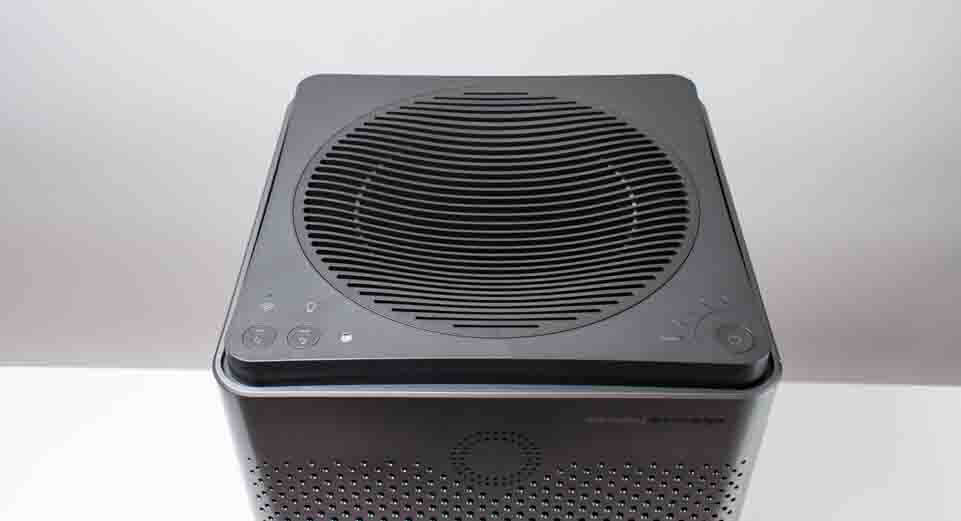
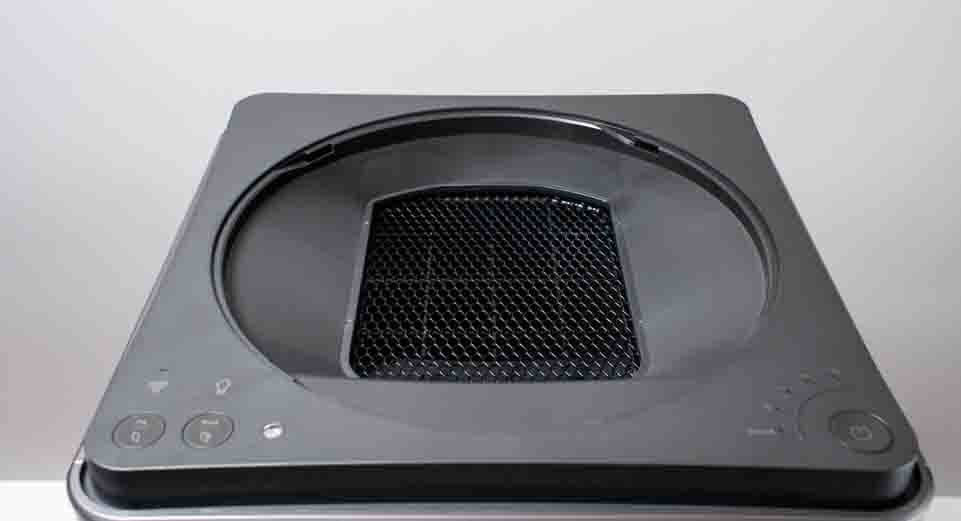
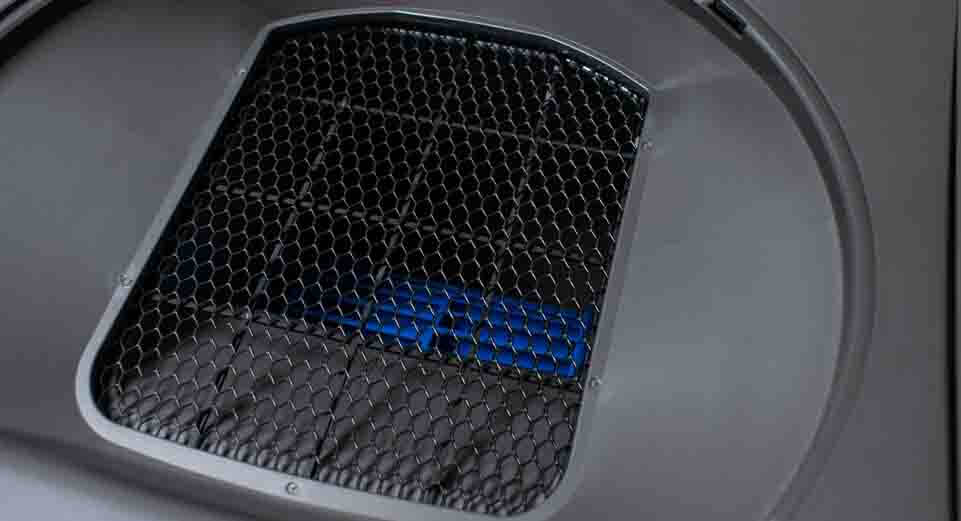
The AirMega processes a much greater quantity of air every minute than most other air purifiers on the market. The unit of measurement we use to describe this rate of air processing is CFM – cubic ft. per minute.
The AirMega outputs at approx. 430 CFM. In other words, it processes approx. 430 cubic ft. of air every minute.
The Coway Mighty and Winix 5500-2 output at approx. 250 CFM. They process about 250 cubic ft. of air per minute.
As you might expect, there’s a direct correlation between CFM and area of coverage. The greater the CFM, the greater the area of coverage. However, our testing showed that this is only true up to a certain square footage. Beyond that square footage, 250 CFM units and higher CFM units like the AirMega, clean the air equally fast and to the same extent (the same low concentration). That threshold exists at 300 sq. ft.
According to our testing, approx. 100 to 140 CFM units like the GermGuardian AC4825 can only be used in rooms up to 150 sq. ft.
Approx. 250 CFM units like the Mighty and 5500-2 can only be used in rooms up to 300 sq. ft.
And here comes the unexpected: higher CFM units like the AirMega can still only be used in rooms up to 300 sq. ft.
In 300+ sq. ft. spaces a high CFM unit like the AirMega and a 250 CFM unit like the Mighty are equally effective. In smaller spaces, the AirMega will absolutely clean the air faster because of its higher CFM. But in larger spaces (300+ sq. ft.) it will clean the air just as fast as 250 CFM units.
Why and how? It has to do with the fact that one AirMega at approx. 430 CFM is still only one air purifier representing a single location in the room where dirty air can be taken into the air purifier and clean air is outputted back into the room. Our testing showed that multiple lower CFM (250 CFM) units spread out around a large room are much more effective than a single high CFM air purifier like the AirMega.
So, if you need an air purifier for a room larger than 300 sq. ft. our recommendation is multiple 250 CFM units, not a single high CFM unit like the AirMega. We’ll talk more about this recommendation at the end of this review.
Energy Efficiency
During testing, we noticed a very specific trend relating to energy efficiency: the larger the air purifier, the more energy efficient it is. Of course, there are outliers to most trends and the same is true here. But, for the most part, smaller air purifiers are less energy efficient than larger air purifiers. And, that trend continues with the AirMega.
The best way to evaluate an air purifier’s energy efficiency is to compare the amount of air it’s able to process every minute (its CFM) to its power draw (measured in watts). We can do this with a ratio – a CFM/watt ratio. The higher the ratio (the higher the number), the more energy efficient the air purifier is.
Most small air purifiers like the AC4825 have a CFM/watt ratio between 2 and 3 on all three fan speeds. Larger units like the Coway Mighty and Winix 5500-2 have a ratio between 3 and 5 on high and ratios upwards of 10 to 20 on lower fan speeds.
An even larger unit like the Coway AirMega has a ratio of 6.9 on high – more than twice the 3.4 ratio of the Mighty – meaning it is almost twice as energy efficient on high as the Mighty. And the Mighty is one of the most energy efficient air purifiers we’ve tested!
What does this mean in real numbers (and not ratios)? The Mighty draws 72.3 watts on high fan speed at an output of approx. 250 CFM. The AirMega draws less power – 60.5 watts – on high with much greater output – approx. 430 CFM.
On lower fan speeds the Mighty is more energy efficient. The Mighty draws less than 10 watts of power on both medium and low with a CFM/watt ratio of 13.1 on medium and 19.9 on low. The AirMega has ratios of 11.1 and 18.9 on medium and low, respectively. These ratios are still much higher than ratios in the 2 to 3 range for smaller units, but they are lower than those of one of the best performers in the categories in the Coway Mighty.
The bottom line: the AirMega is one of the most energy efficient air purifiers on the market. Its performance on high fan speed is especially impressive. At approx. 430 CFM it draws only 60.5 watts of power compared to the 72.3 watts of the Mighty and the 54.8 watts of the Winix 5500-2, each with a much lower output of approx. 250 CFM.
Noise Output
The AirMega was also a great performer in our noise output testing. For energy efficiency we looked at the CFM/watt ratio. For noise output performance we looked at the CFM/dB ratio. And here the AirMega did very well once again.
Almost all air purifiers we tested were measured at around 60 to 70 dB on high. The AirMega was measured near the top end of this range – at 67.8 dB – but with the most output – approx. 430 CFM – of any of the air purifiers we’ve tested so far. This gave it a 6.2 ratio on high.
For comparison, the Coway Mighty was measured at 66.1 dB with a CFM/dB ratio of 3.8. The Winix 5500-2 was measured at 67.5 dB with a ratio of 3.7.
On low, the AirMega, Mighty, and 5500-2 are all whisper quiet – with a noise output of approx. 40 dB. The difference between them is in total output on this fan speed. On low, the Mighty and 5500-2 output at approx. 70 CFM while the AirMega outputs at approx. 140 CFM.
The bottom line: the AirMega is just as “quiet” as top rated units like the Coway Mighty and Winix 5500-2 on all three fan speeds. However, its output is much greater. The end result is that the AirMega gives you more CFM for the amount of noise it produces than even the best rated units in the category.
Durability
The AirMega is better built and made of noticeably higher quality materials than even top rated units like the Coway Mighty and Winix 5500-2. Of course, the AirMega is quite a bit more expensive as well.
The AirMega’s side panels are made of plastic but come with a high quality metal-like finish. A large round circular grille with a matte black plastic finish is seated on the top of the unit. Examples of higher quality construction include the unit’s braided power cable, its high quality front sensor LEDs, and the fact that fan speed ramps up and down slowly (when changing fan speed) to preserve the life of the fan motor.
The AirMega comes with a very respectable 5 year long warranty. The Mighty’s warranty is slightly shorter – 3 years – while the Winix’s warranty is one of the shortest in the industry – only 1 year.
Ease of Use
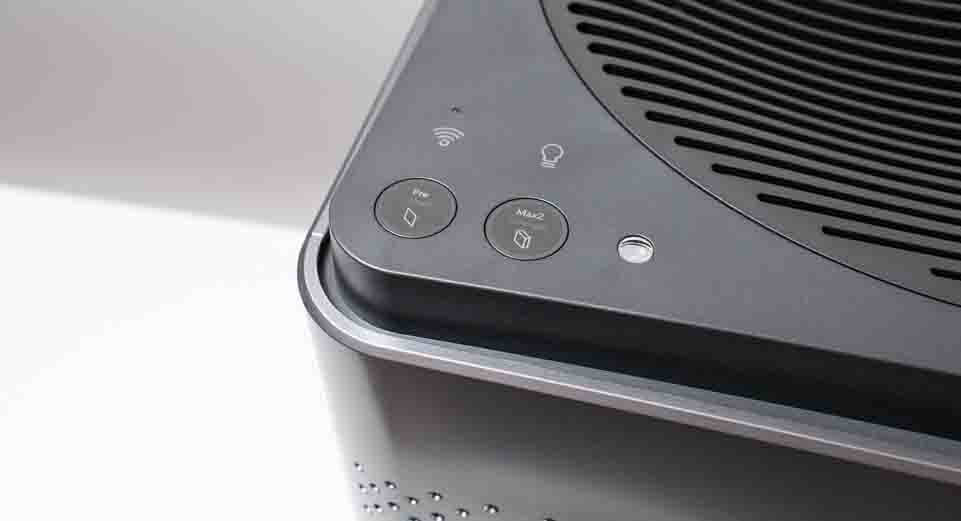
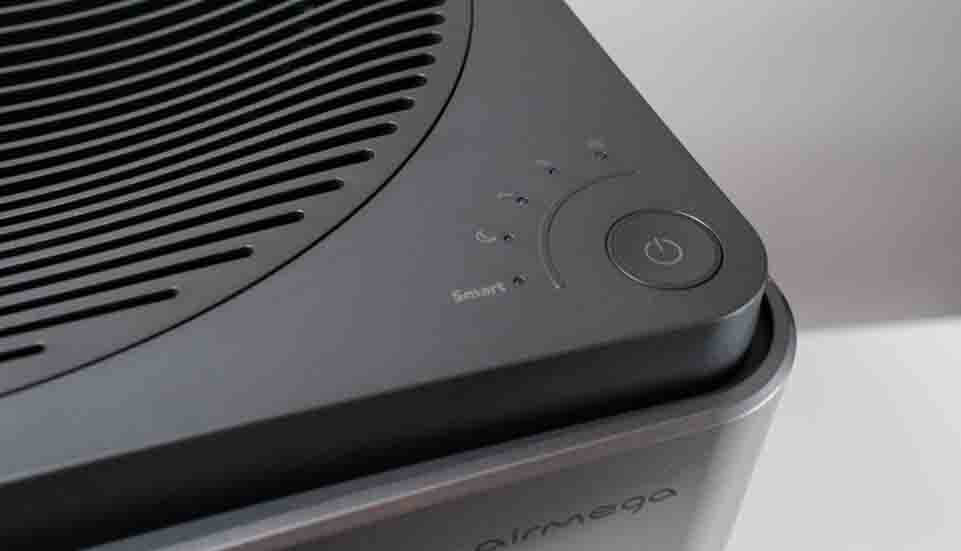
The AirMega gives you quite a bit of control panel light control but with no option to turn all lights completely off. Pressing the lightbulb button on the top control panel toggles two different “lighting” modes:
- all lights are on – 2x filter lights, power light, fan speed lights, mode light, front air quality colored lights
- on fan speed lights on
Turning on sleep mode turns all lights off except for the light showing that sleep mode is activated. This is also a fully automatic mode that does not allow for manual control of fan speed.
Note that enabling smart functionality on S models also activates a Wifi light on the front control panel. This light stays on at all times (assuming your home’s wifi is active at all times), even when the air purifier is completely shut off. You’ll have to unplug the unit from the wall outlet to shut the light off.
Most other air purifiers on the market provide little to no light control. Budget models like the AC4825 usually have at least one power and/or fan light that always stays on with no option to turn it off. Top rated units like the Winix 5500-2 and Coway Mighty have even more control panel lights (an ionization light, air quality light, etc.) with no option to turn them off.
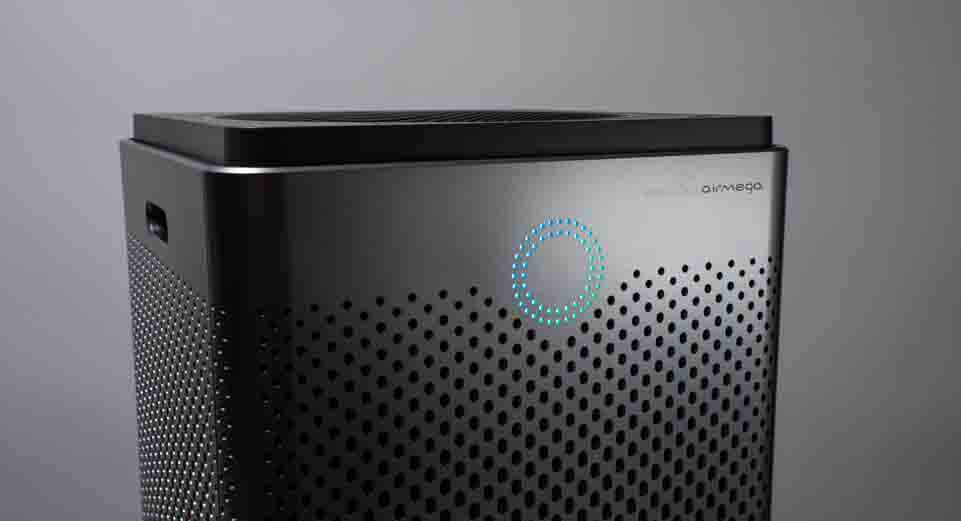
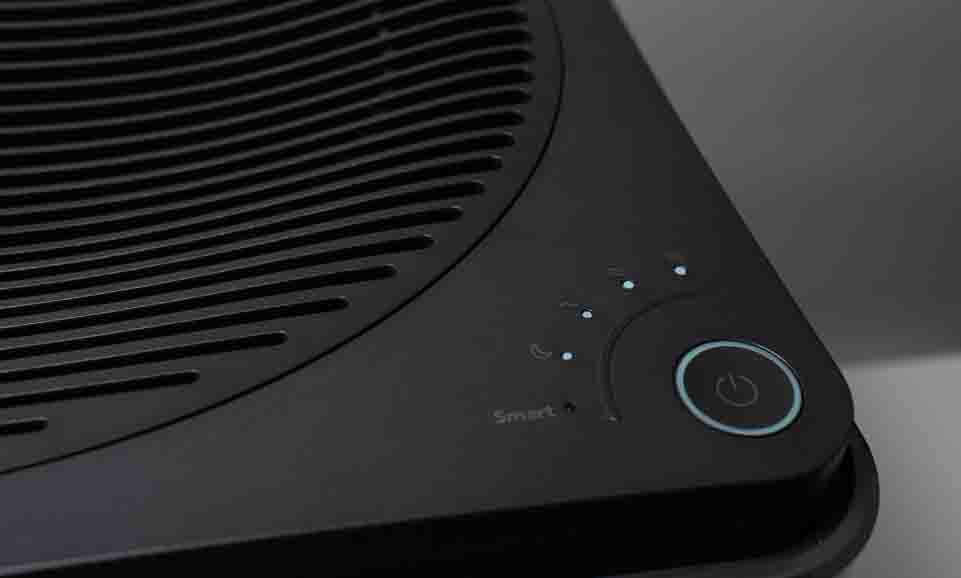
The AirMega is one of the larger and heavier air purifiers we tested – unsurprising considering its very high output (CFM). The unit weighs about 24 lb., is about 23 inches tall, and about 15 inches wide and deep. It does have two side pocket handles that make picking it up and moving it around more easy.
The Winix 5500-2 and Coway Mighty weigh 16.5 lb. and 12.5 lb., respectively. The Mighty is only 17 inches tall while the Winix is just as tall and wide as the AirMega, albeit with about half the depth. Both the Winix and Mighty have a single pocket handle on the top back of the air purifier. They are slightly more portable, mostly because they weigh less but also because they can easily be picked up with one hand while the AirMega requires that you pick it up with both hands.
The AirMega is feature rich. It has three automatic modes – an eco mode, sleep mode, and regular auto mode. It also comes with an air quality sensor, its corresponding display, and a timer. S models are also fully compatible with iOS and Android devices. You can control all settings wireless with your phone once wifi is setup and activated on 300s and 400s models.
Top rated lower CFM units like the Coway Mighty and Winix 5500-2 also come with multiple auto modes, an air quality sensor and display, and a timer. But neither unit comes with smart functionality. The Winix does come with a physical remote. Budget units like the GermGuardian AC4825 usually only come with three fan speed settings – no auto modes, no air quality sensor, and no timer.
Value
The only real negative for the AirMega is its poor value. Depending on the exact model, you can expect to pay anywhere from approx. $400 up to approx. $700 for an AirMega air purifier.
Top rated units like the Coway Mighty and Winix 5500-2 retail in the $150 to $200 range and provide a much better value.
These units provide very similar filtration quality (washable pre-filter, carbon filter, true HEPA filter) and still have a fairly high output at around 250 CFM.
It’s not the 430 CFM of the AirMega 400 but it’s still a very high CFM and it’s still good enough for most rooms.
But, let’s just say for the sake of argument that you really value the AirMega’s high CFM. What are you to do if you absolutely need that high CFM? What then?
The problem with buying an AirMega in this scenario is that you can buy two Winix units with a total output of 500 CFM and still be well under the price of a single AirMega unit at a total output of only 430 CFM.
So, if you need an air purifier for a small room: a top rated unit like the Winix or Coway Mighty has more than enough output.
If you need an air purifier for an extra large room – you can buy multiple Winix or Coway Mighty units, if necessary, and still be well under the price of a single AirMega.
And we’re not talking about a small price difference here either.
Multiple Winix units will run you about $300 – that’s 500 CFM for around $300. One AirMega 400 - not even an S model - normally retails for around $450 on a good deal. The S model adds another $100 to that. That’s 100s of dollars more for less CFM (430 with the AirMega vs 500 with 2x Winix units).
The truth is that the only real issue we have with the AirMega is its price. If it was more affordable it likely would have been a top rated recommended unit. But, as it stands - at its current price - we cannot recommend it over lower output top rated units like the Winix 5500-2 or Coway Mighty.
Again, if you need an air purifier for a smaller room (less than 300 sq. ft.) one Winix or Mighty will suffice at well under the price of the AirMega.
If you need an air purifier for a larger room (more than 300 sq. ft.) we recommend multiple Winix or Mighty units. They’ll provide even more CFM than a single AirMega 400 at a much lower price. And again, you’re not losing any filtration quality or features (other than wifi functionality in AirMega S models) by opting for these lower CFM lower priced units.
Add a Comment
Have a question or comment? Let us know below.

Comments (3)
having read countless air purifier reviews i must say that yours seem the most meaningful, trustworthy, intelligent and independent of all. thanks.
Well done!!!! Thanks for the info.
Would you happen to know the CFM ratings for all three speeds?
Thanks!
Approx. 430 CFM, 300 CFM, and 140 CFM.